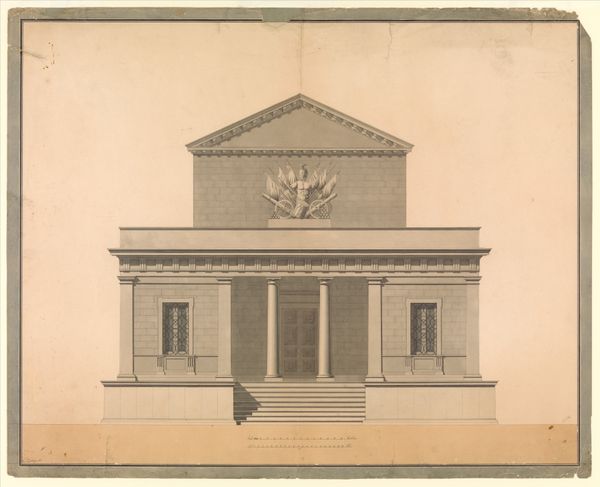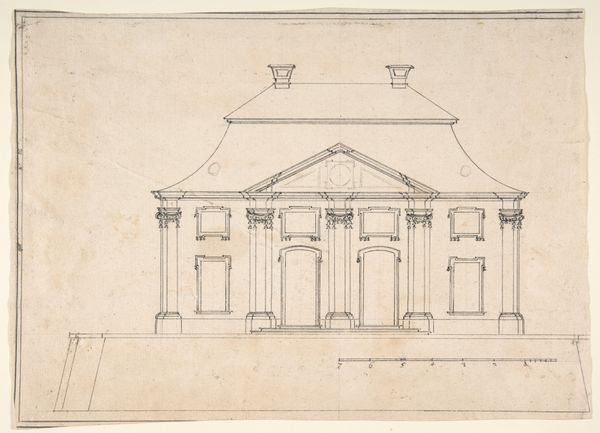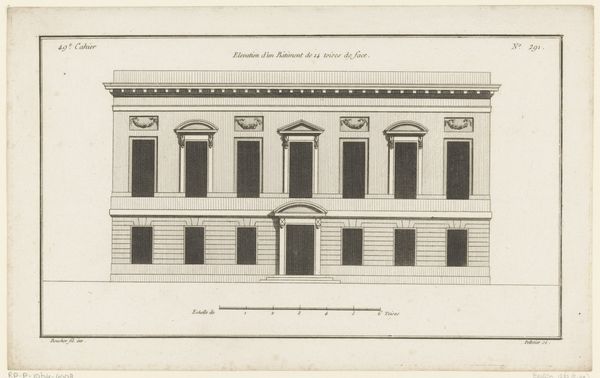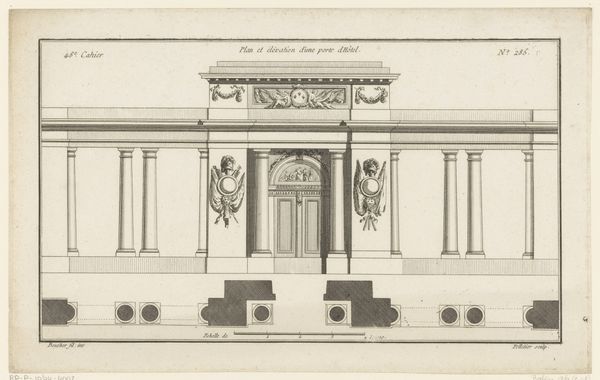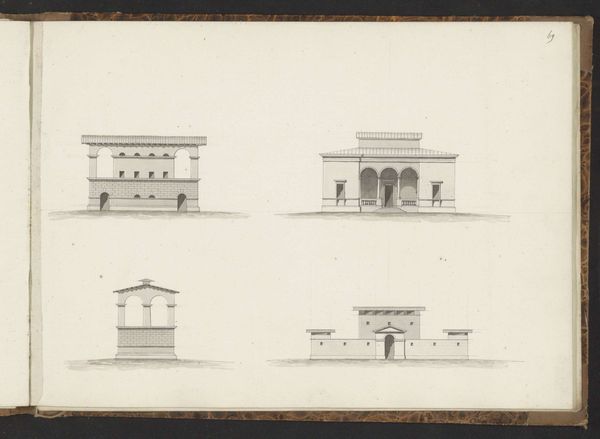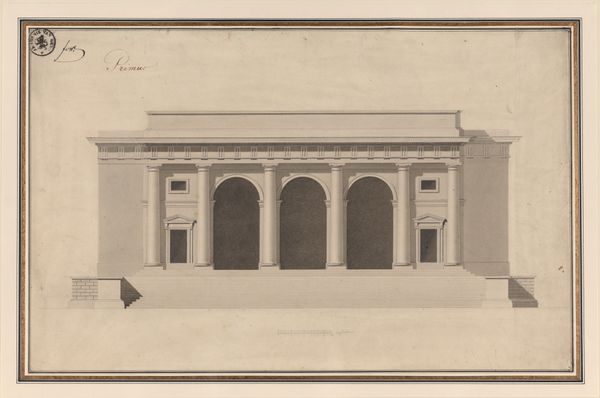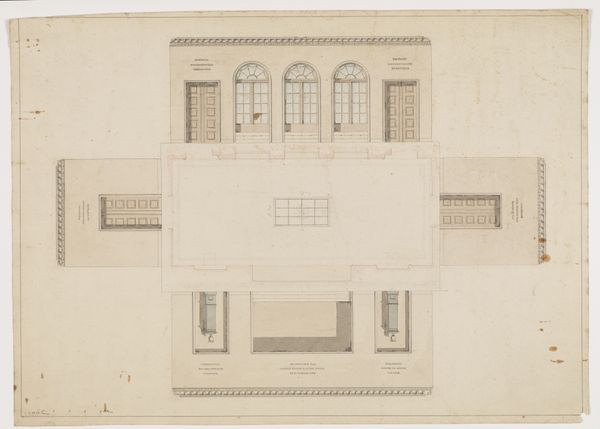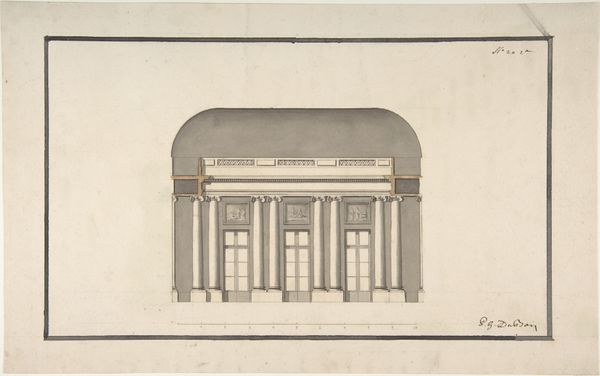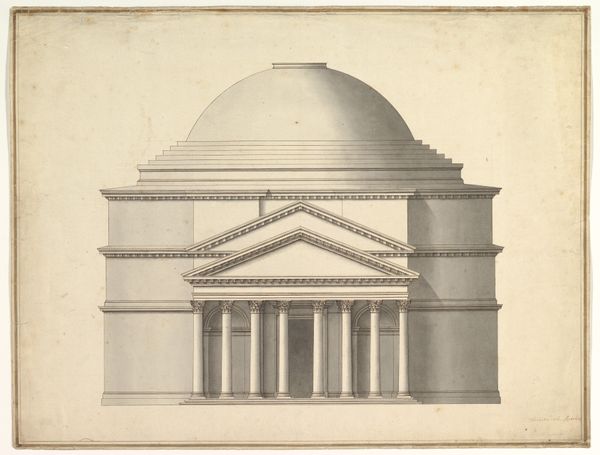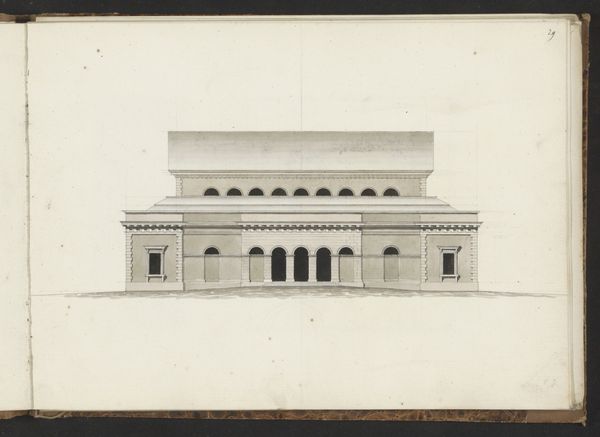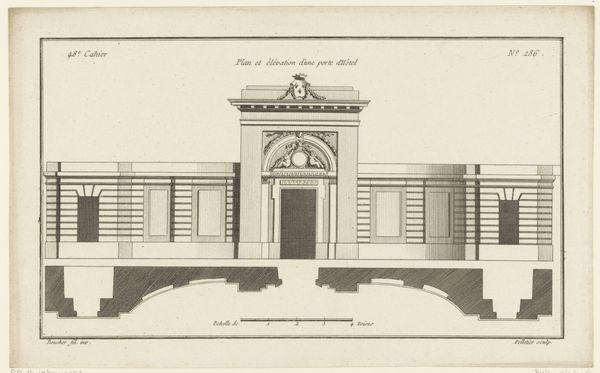
drawing, paper, ink, pencil, architecture
#
drawing
#
neoclacissism
#
classical-realism
#
paper
#
ink
#
pencil
#
cityscape
#
architecture
Dimensions: 330 mm (height) x 494 mm (width) (bladmaal)
Editor: Here we have "Komediehuset. Forslag til facade," a proposed facade for a theatre, conceived by Caspar Frederik Harsdorff between 1771 and 1774. It's rendered in ink and pencil on paper, and exudes a certain reserved elegance. I’m curious, what historical resonances do you pick up on in this drawing? Curator: The echoes of antiquity are undeniable. Observe the emphasis on symmetry, the Doric columns, the triangular pediment… These are all deliberate invocations of classical Greece, filtered through a Northern European lens. The inscription above the columns speaks of "the home of mirth, the medicine of the mind." What cultural memories do those words trigger? Editor: Well, the phrase "medicine of the mind" makes me think about the role of theatre in ancient society as both entertainment and a source of moral lessons, almost a kind of public therapy. Curator: Precisely! Theatre, from the Greeks onward, held a crucial role in civic life. It wasn’t merely diversion. Think about the masks of tragedy and comedy—they are icons embodying powerful, enduring human emotions. Do you see any of those extremes reflected in the stoic symmetry here? Editor: That's an interesting question, given how controlled the facade seems! I suppose that sense of balance would reflect a desire for social order in the period. The planned inscription emphasizes comedy and mental well-being, does that make this design particularly forward-thinking or are we simply looking at conventional symbols? Curator: A fascinating question! Perhaps both. The design signifies established virtues, but through Harsdorff's refined treatment, a new sense of civic-mindedness finds expression. Look closely; even in its reserved character, don't you discern a celebration of collective experience and betterment? Editor: I hadn't thought about it that way before. I initially perceived it as purely formal, but now I see how it encapsulates so much more about its time! Curator: Exactly. These echoes aren’t accidental. They represent a deliberate attempt to create a space that resonates with collective values. It shows the theater to be more than merely entertainment!
Comments
No comments
Be the first to comment and join the conversation on the ultimate creative platform.
